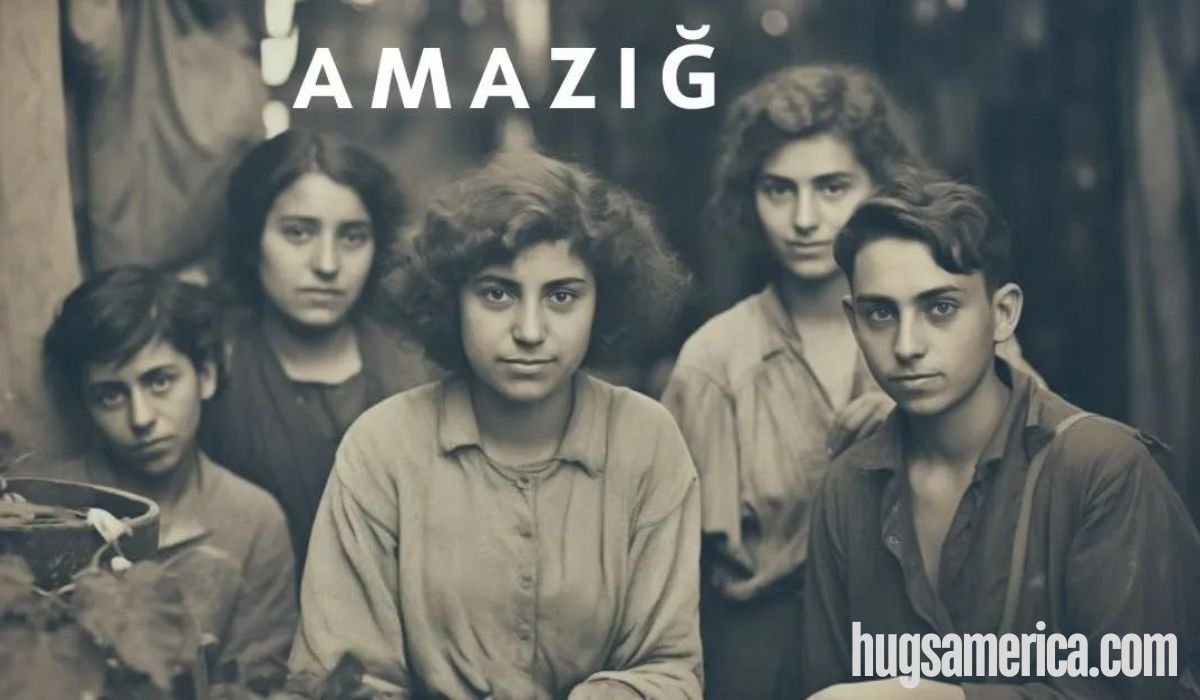Introduction to Amaziğ
The Amaziğ people, often referred to as the Berbers, are an indigenous ethnic group native to North Africa. Their rich history, unique culture, and contributions to civilization span thousands of years, yet they remain a relatively lesser-known group on the global stage. This article aims to shed light on the Amaziğ, delving into their origins, traditions, language, and modern-day presence.
Who Are the Amaziğ?
The Amaziğ, meaning “free people” or “noble men,” have lived in North Africa for millennia. Their territories stretch from the Canary Islands in the west to Egypt’s Siwa Oasis in the east, and from the Mediterranean Sea in the north to the Niger River in the south. The term “Berber” is often used to refer to them, but many prefer “Amaziğ” as it is their name in their language.
Historical Overview
The Amaziğ have a history that dates back over 4,000 years. They played significant roles in ancient civilizations, engaging in trade and cultural exchanges with Egyptians, Phoenicians, Carthaginians, Romans, and Arabs. Key historical periods include:
- Prehistoric Era: Early Amaziğ societies were hunters and gatherers before transitioning to agriculture and pastoralism.
- Antiquity: The Amaziğ interacted with major Mediterranean civilizations. The Kingdom of Numidia, established around 202 BC, is one of the most notable Amaziğ states.
- Islamic Period: Following the Arab conquest in the 7th century, many Amaziğ adopted Islam but retained distinct cultural practices.
Language and Writing
The Amaziğ language, also called Tamaziɣt, belongs to the Afroasiatic language family. It has several dialects, including Tashelhit, Tarifit, and Kabyle. Efforts to standardize and promote the language have led to the development of a modern Amaziğ script known as Tifinagh.
Tifinagh Script
Tifinagh is an ancient script used by the Amaziğ, particularly by the Tuareg people. Its modern version has been adapted for educational purposes and is a symbol of cultural pride.
Language Revitalization
There has been a resurgence in efforts to preserve and promote the Amaziğ language. Governments in countries like Morocco and Algeria have recognized Tamaziɣt as an official language, leading to its inclusion in educational curricula.
Amaziğ Culture and Traditions
Amaziğ culture is rich and diverse, encompassing various aspects such as art, music, dance, and cuisine. Here are some key elements:
Art and Crafts
Amaziğ art is renowned for its intricate designs and vibrant colors. Traditional crafts include:
- Jewelry: Silver jewelry adorned with coral, amber, and other stones is a hallmark of Amaziğ craftsmanship.
- Textiles: Handwoven rugs and fabrics with geometric patterns are highly prized.
- Pottery: Amaziğ pottery features unique shapes and decorative motifs.
Music and Dance
Music and dance are integral to Amaziğ cultural expression. Traditional instruments include the gimbri (a three-stringed lute), bendir (frame drum), and zurna (reed instrument). Key dance styles include:
- Ahidus: A communal dance performed by men and women in a circle, often accompanied by poetry.
- Ahwash: A dance performed during celebrations, characterized by rhythmic clapping and chanting.
Festivals and Celebrations
Amaziğ festivals are vibrant events that celebrate agricultural cycles, religious observances, and historical commemorations. Major festivals include:
- Yennayer: The Amaziğ New Year, celebrated on January 12th, marking the start of the agricultural year.
- Imilchil Marriage Festival: A unique event where Amaziğ tribes gather to celebrate and arrange marriages.
The Amaziğ in Modern Times
Despite historical challenges, the Amaziğ have maintained their cultural identity and continue to influence contemporary society. Key areas of modern Amaziğ life include:
Political Activism
Amaziğ activism has gained momentum in recent decades, with movements advocating for cultural rights, language preservation, and political representation. Significant milestones include:
- Recognition of Tamaziɣt: Morocco and Algeria have officially recognized Tamaziɣt as a national language.
- Cultural Associations: Numerous organizations work to promote Amaziğ culture and heritage.
Economic Contributions
The Amaziğ contribute significantly to the economies of North African countries through agriculture, craftsmanship, and tourism. Key economic activities include:
- Agriculture: Amaziğ farmers grow olives, dates, and grains, and engage in pastoralism.
- Craftsmanship: Traditional Amaziğ crafts are popular among tourists and collectors.
- Tourism: Cultural tourism, including visits to Amaziğ villages and participation in festivals, attracts visitors from around the world.
Challenges Facing the Amaziğ
Despite their rich heritage, the Amaziğ face various challenges, including:
Cultural Assimilation
The pressure to assimilate into dominant cultures has threatened the preservation of Amaziğ language and traditions. Efforts to counteract this include educational programs and cultural festivals.
Economic Marginalization
Many Amaziğ communities, particularly in rural areas, face economic hardships. Initiatives to promote sustainable development and improve infrastructure are crucial.
Political Representation
Achieving adequate political representation remains a challenge for the Amaziğ. Advocacy groups continue to work towards greater inclusion and recognition in government.
YOU MAY ALSO LIKE: Understanding Pollaste: A Comprehensive Guide
Conclusion
The Amaziğ people are a testament to resilience and cultural richness. Their history, language, and traditions offer a fascinating glimpse into an ancient civilization that continues to thrive today. By understanding and appreciating the Amaziğ, we can celebrate the diversity and heritage that enrich our global community.
This comprehensive exploration of the Amaziğ aims to provide a thorough understanding of their culture, history, and modern-day presence. For those looking to delve deeper into the world of the Amaziğ, numerous resources and cultural centers offer further insights and opportunities for engagement.
FAQS
- What is the Amaziğ culture?
- The Amaziğ culture refers to the indigenous culture of the Berber people, native to North Africa. It includes rich traditions in art, music, dance, and cuisine, as well as a unique language known as Tamaziɣt or Berber.
- Where do the Amaziğ people live?
- The Amaziğ people primarily inhabit North Africa, spanning from the Canary Islands to Egypt’s Siwa Oasis and from the Mediterranean Sea to the Niger River. They have historical ties to regions such as Morocco, Algeria, Tunisia, Libya, and Mauritania.
- What language do the Amaziğ people speak?
- The Amaziğ people speak various dialects of Tamaziɣt, which is a part of the Afroasiatic language family. Major dialects include Tashelhit, Tarifit, and Kabyle. Efforts to preserve and promote Tamaziɣt have led to its recognition as an official language in some North African countries.
- What are some traditional Amaziğ festivals?
- Traditional Amaziğ festivals include Yennayer, which marks the Amaziğ New Year on January 12th, and the Imilchil Marriage Festival, where Amaziğ tribes gather to celebrate and arrange marriages. These festivals are vibrant celebrations of cultural heritage and community.
- How can I learn more about Amaziğ culture and history?
- Interested individuals can learn more about Amaziğ culture and history through cultural centers, museums, and educational programs dedicated to Berber studies. Online resources, books, and documentaries also offer valuable insights into their ancient civilization and contemporary presence.
These FAQs and answers provide a brief overview of common inquiries regarding the Amaziğ culture, aiming to satisfy curiosity and encourage further exploration into this fascinating indigenous group.










